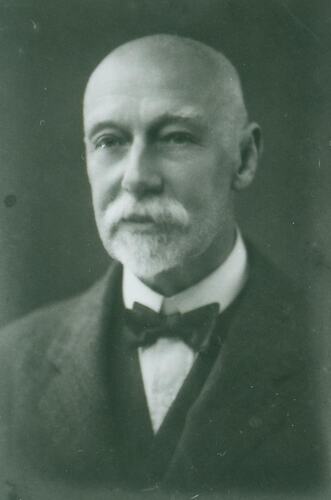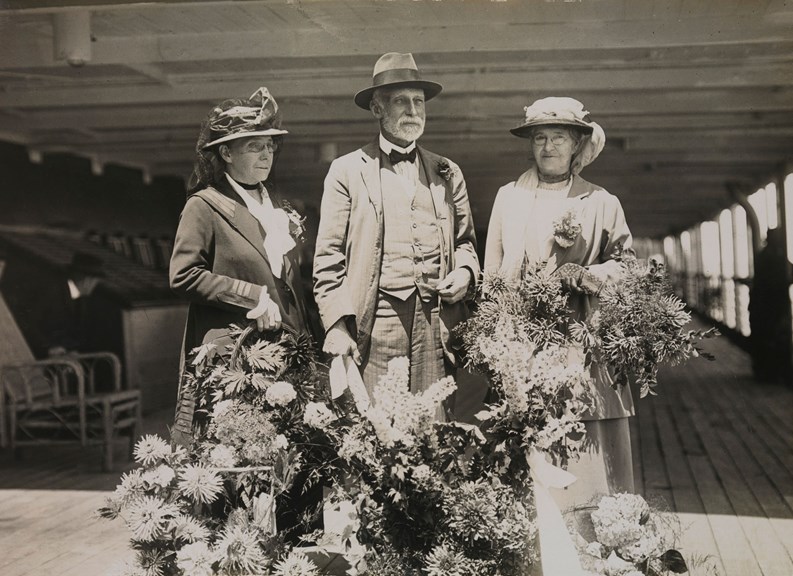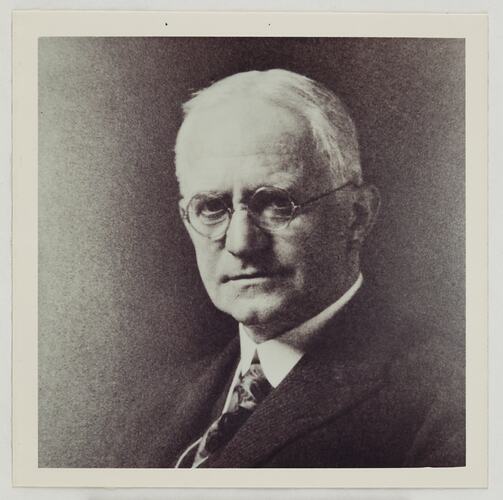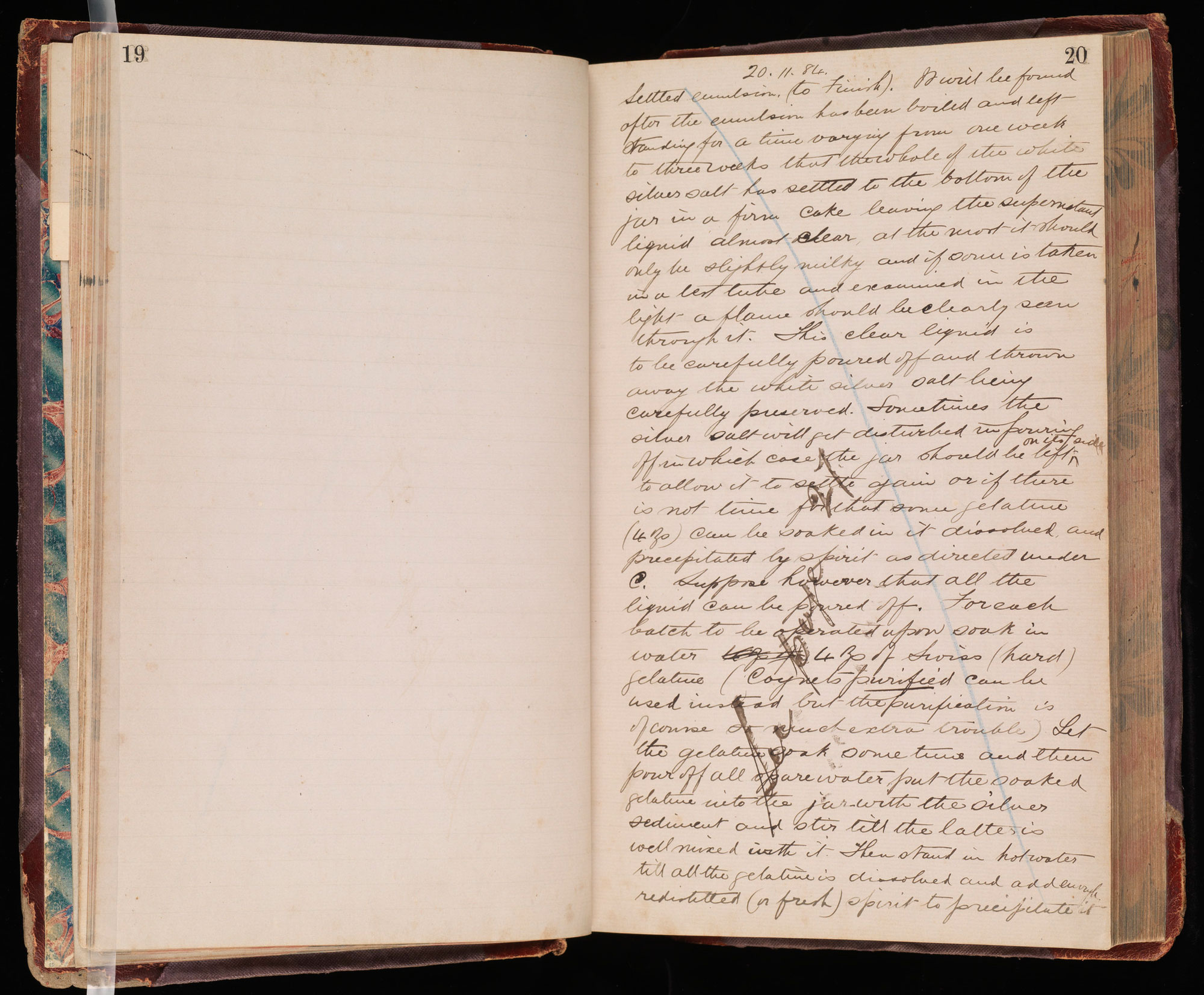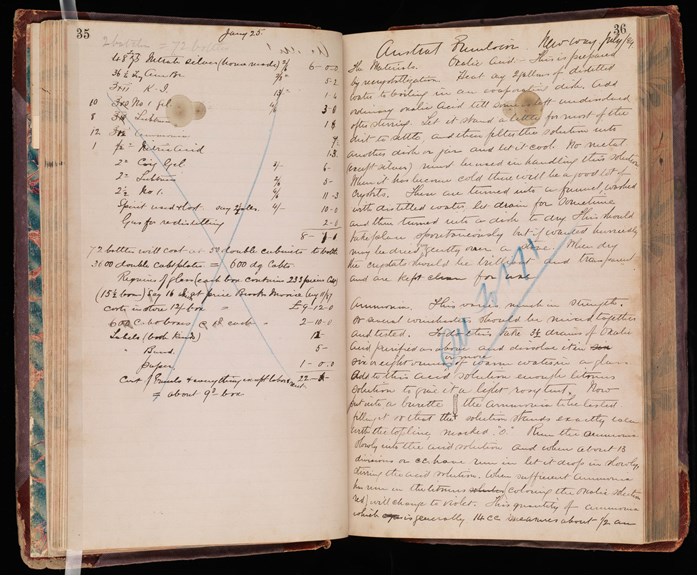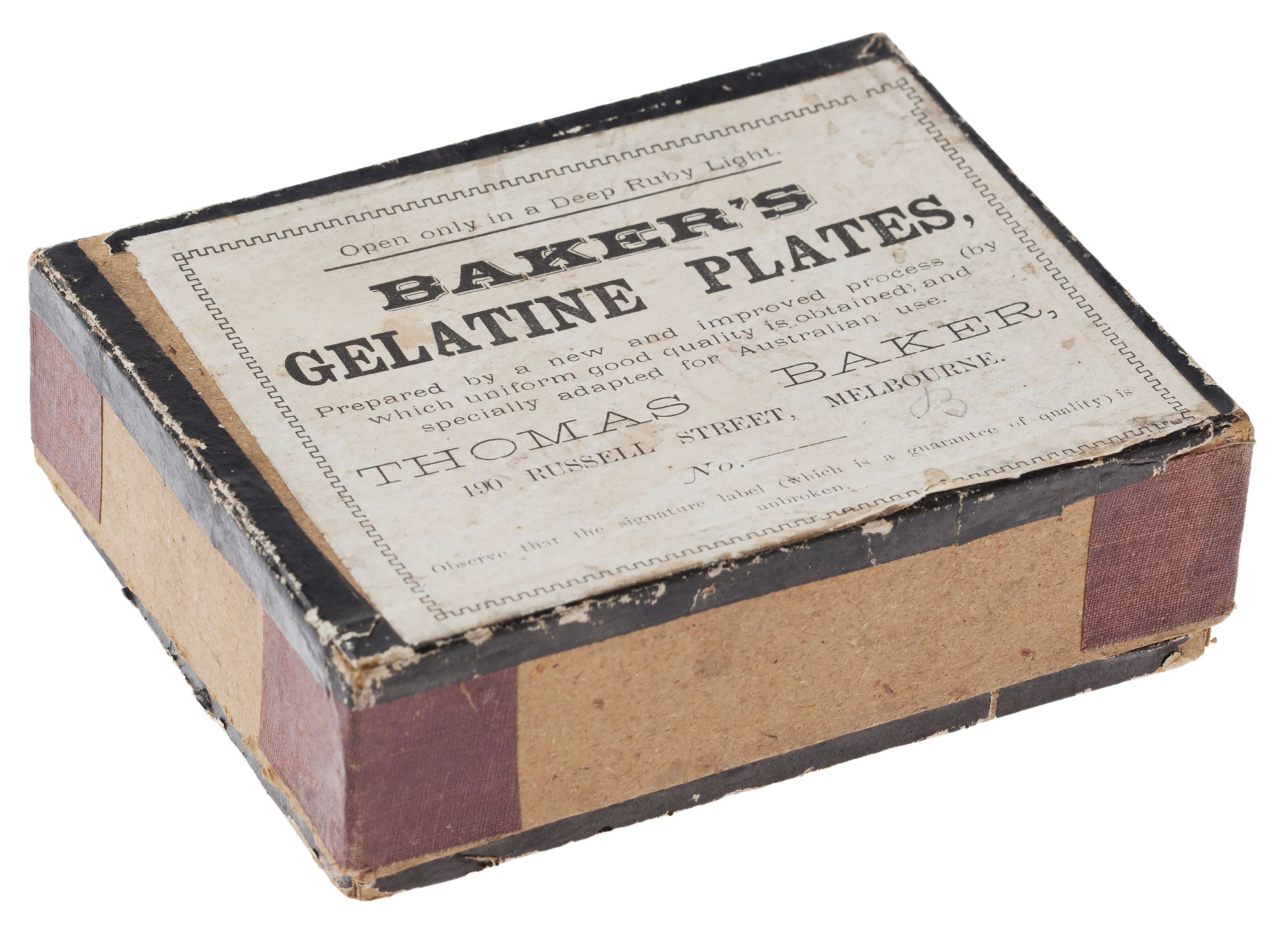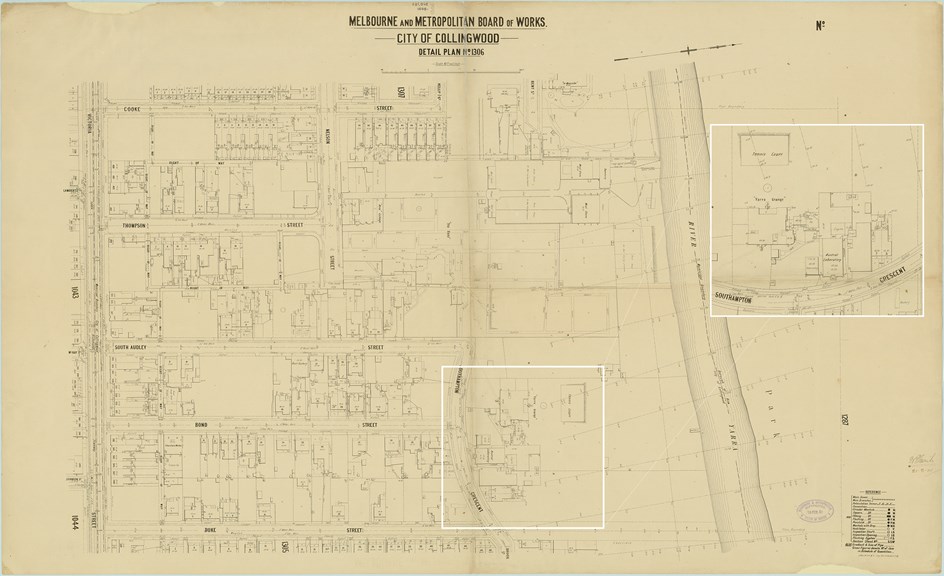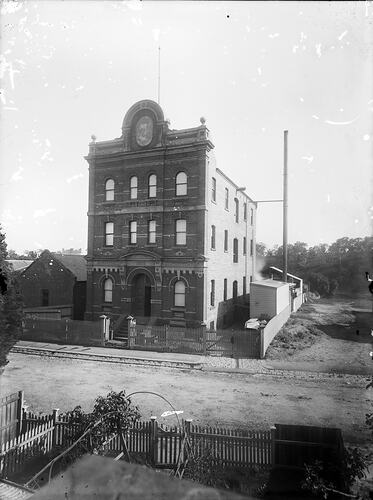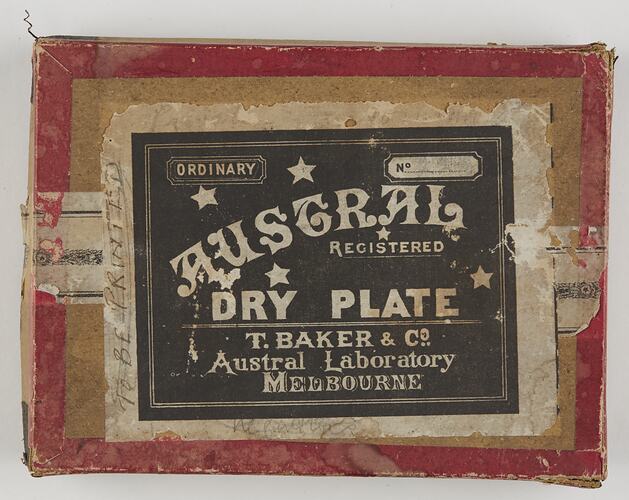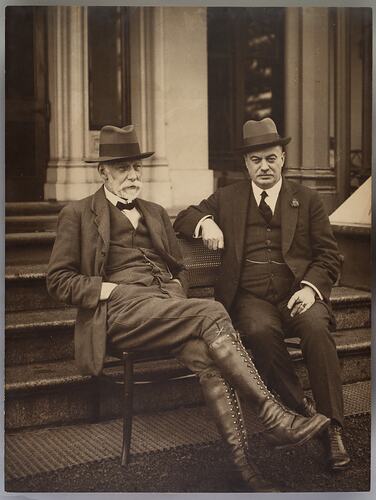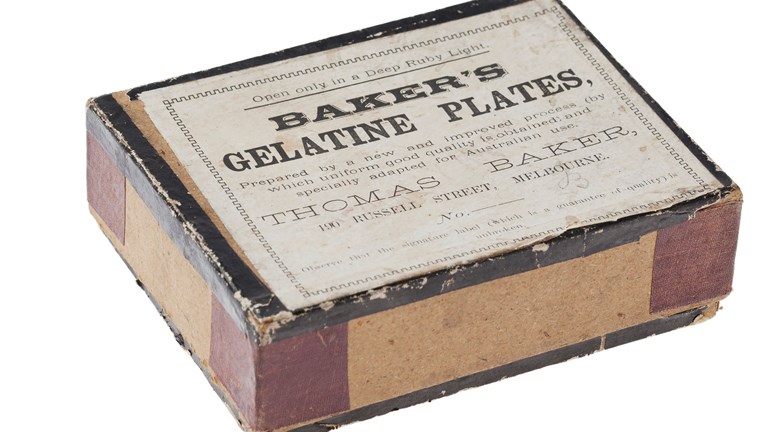
Thomas Baker’s Photographic Plates
Silver, Gelatine and Glass
It is 1884, and three people are hard at work in the darkened, underground cellar of their home by the Yarra River in Abbotsford, Melbourne.
Guided by a dim, ruby red light, they are coating glass plates by hand with a silver gelatine photographic emulsion, to create dry plate negatives for photographers to use.
(Photographic plates were used in cameras to take negative images. They are the equivalent of photographic roll film.)
This was the beginning of one of Australia’s earliest dry plate makers – who was to create the most successful photographic manufacturing company in the country.
The trio in the cellar were Thomas Baker, assisted by his wife Alice, and her sister Eleanor Shaw.
Thomas Baker was the entrepreneur and the scientist heading up this venture. He was a thirty-year-old chemist who was also studying medicine. He gave up his studies and a future career as a doctor, to take a chance on making money out of dry plates.
Dry plates had revolutionised photography in the late 19th century. To enjoy photography you no longer needed to be an expert at chemistry or lug a darkroom around with you. Budding photographers could now just buy photographic plates off the shelf, place them in their camera, take a photograph and then return to a photographic store to have the plates developed and photographs printed.
Baker saw a gap in the market, and because of his chemistry expertise he was able to develop a successful product designed for Australian conditions, to compete with the imported brands whose quality was unreliable after being shipped half way around the world from England or America.
Baker was only a few years behind George Eastman with his dry plate venture. Eastman was the founder of the Eastman Kodak company, and had started making dry plates in the USA in 1880, which had quickly become a huge success. Baker and Eastman were later to get to know each other very well and go into business together in the first decade of the 20th century.
Thomas Baker first experimented with making photographic dry plates in the early 1880s. He painstakingly recorded his emulsion recipes, and the results of his many chemistry experiments, in this formulae book, which he kept in use for almost 40 years.
"Take in a measure 30 ounces of silver solution and pour it into the above solution of Bromide & Gelatine. Pour in a good stream (not too slowly) stirring well…"Formulae Book - Thomas Baker, Austral Plate Company & Kodak Australasia Pty Ltd, Abbotsford, Victoria, 1884-1921, Page 31
By 1885 Baker, his wife and his sister-in-law were selling plates to photographers at their shop and manufacturing premises, located at 190 Russell Street in Melbourne. His photographic plates soon became favoured by amateur and professional photographers around Australia.
Baker’s business was a true cottage industry in the beginning, because he conducted experiments and made dry plates at his home, "Yarra Grange". This was a large bluestone mansion located on a former grazing property of about 7 acres along the Yarra River, across the road from Studley Park. From its humble beginnings in the cellar of "Yarra Grange’" the dry plate business soon outgrew the Baker’s family home. While Baker’s Russell Street premises was referred to as the Dry Plate Works, Baker soon decided that the business needed to expand and his residential property in Abbotsford was gradually transformed into a complex factory site.
By 1886 Baker had constructed a small, yet grand, industrial building adjacent to his house, to industrialise his plate production. Called the Austral Laboratory, it was a three-storey brick building which accommodated Baker and his staff through the 1880s and 90s.
1886 was a busy year for Baker, who exhibited "photographic sensitised materials and accessories" at the Colonial and Indian Exhibition in London, winning a Silver Medal.
In 1887 Thomas Baker registered a new trademark for his business, "Austral", featuring the stars of the Southern Cross, which became a well-known brand for his products into the 20th century.
After three years in business, Baker’s enterprise took an exciting new turn. In 1887 Thomas Baker established a new company with accountant and retailing genius John Joseph (JJ) Rouse, known as Baker & Rouse.
Baker & Rouse sold imported and local photographic products, including Baker’s own products, which he continued to make under his Austral brand. Baker created a separate manufacturing company, T Baker & Company, but operated independently to Baker & Rouse, with no financial connection between them until 1896 when the two companies merged to form Baker & Rouse Limited. Baker & Rouse went on to dominate Australia’s photographic market for the next 21 years.
In 1908, 24 years after the first dry plates were made in the Bakers’ cellar, Baker & Rouse merged with George Eastman’s Kodak company to become Australian Kodak Limited, later known as Kodak Australasia Pty Ltd. This company in turn went on to produce photographic products in Australia for almost 100 years.
